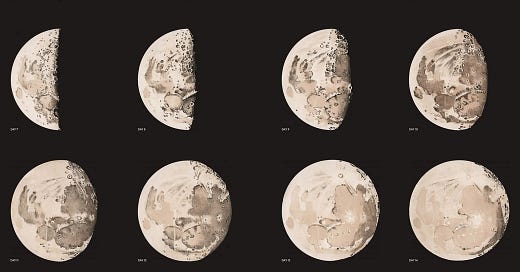You wait ages for an essay about Johannes Kepler’s 1634 Somnium, and then two come along at once…
Pippa Goldschmidt’s official topic is exoplanets, both real and imagined, but she begins with Kepler’s proto-science-fiction,
in which a mother and son journey to the Moon and describe the appearance of the Earth from there, complete with observed “phases” akin to the Moon’s own.
Jenny Uglow’s subject is the moon itself, but she gets to Kepler in time:
In Kepler’s novel Somnium (The Dream, 1634), dense with footnotes … he claims that Earth’s motion would be visible from the moon’s surface, and he imagines it alive with plants and animals, suggesting, too, that one day humans might reach it.
Kepler was not wrong. On July 21, 1969, an estimated fifth of all humanity watched the moon landing on TV, and while Armstrong and Aldrin did not encounter organic life, they were
astonished to find “a landscape flecked with color,” [whose] volcanic glass … reveals a mineral spectrum “from yellow and orange…
Keep reading with a 7-day free trial
Subscribe to Under the Net to keep reading this post and get 7 days of free access to the full post archives.



